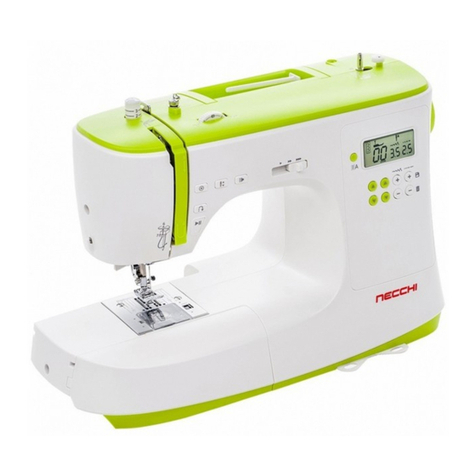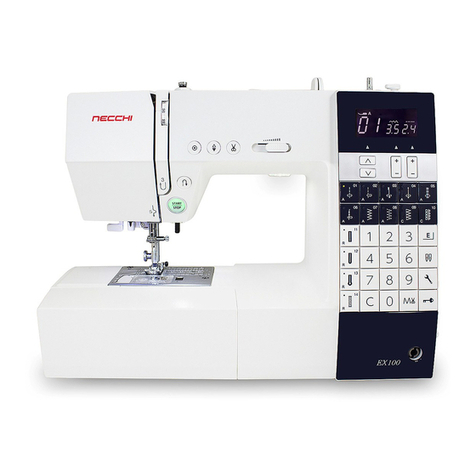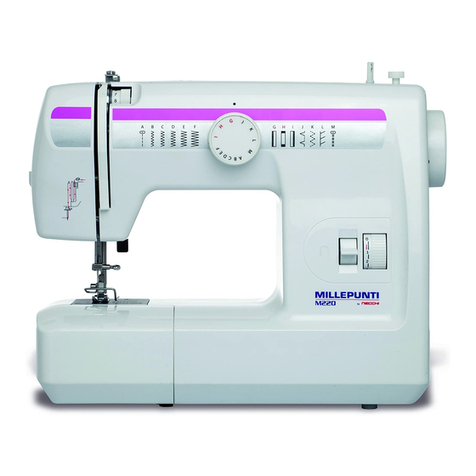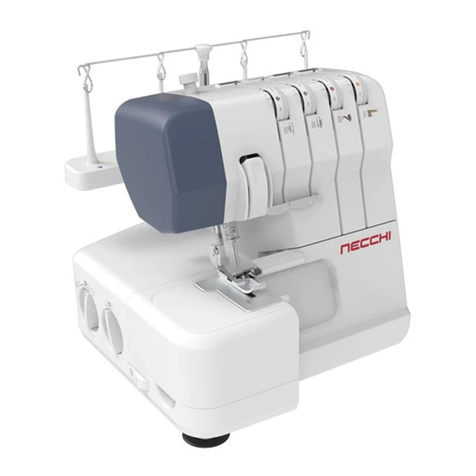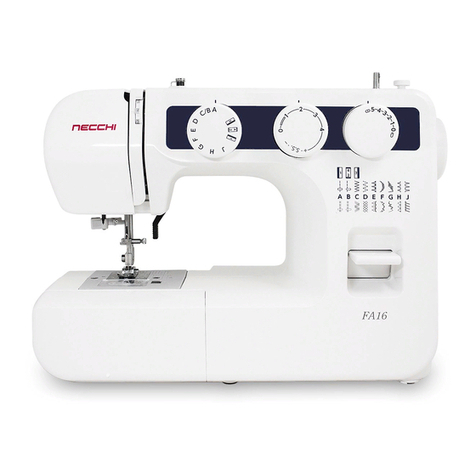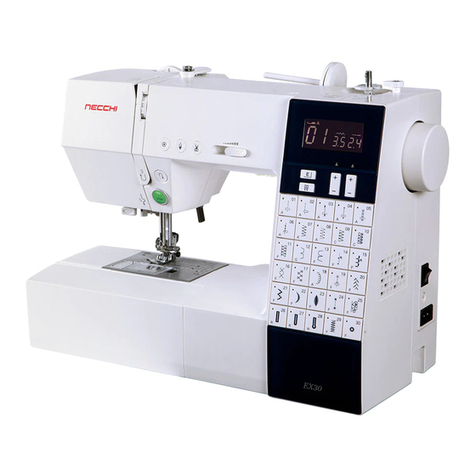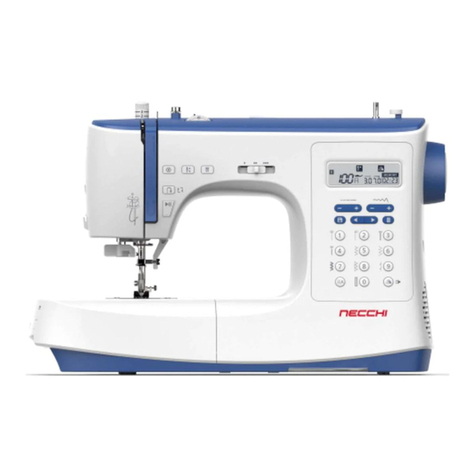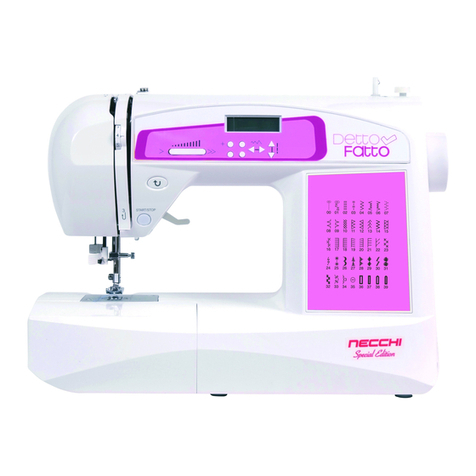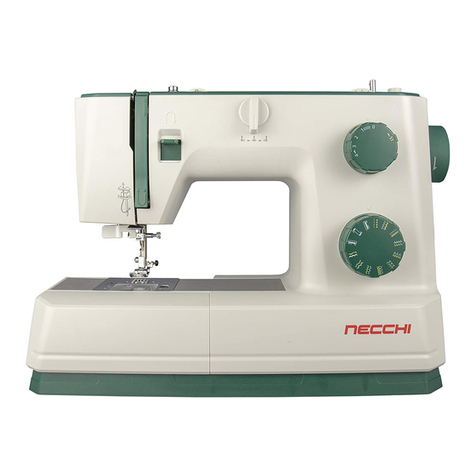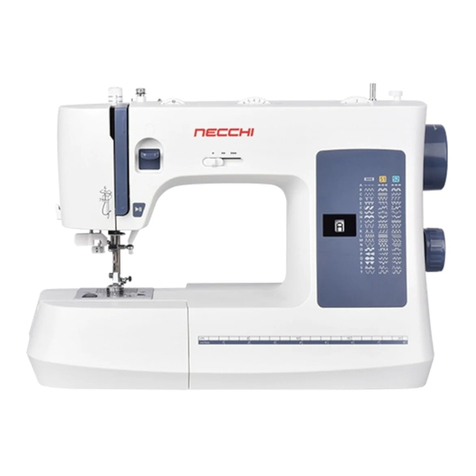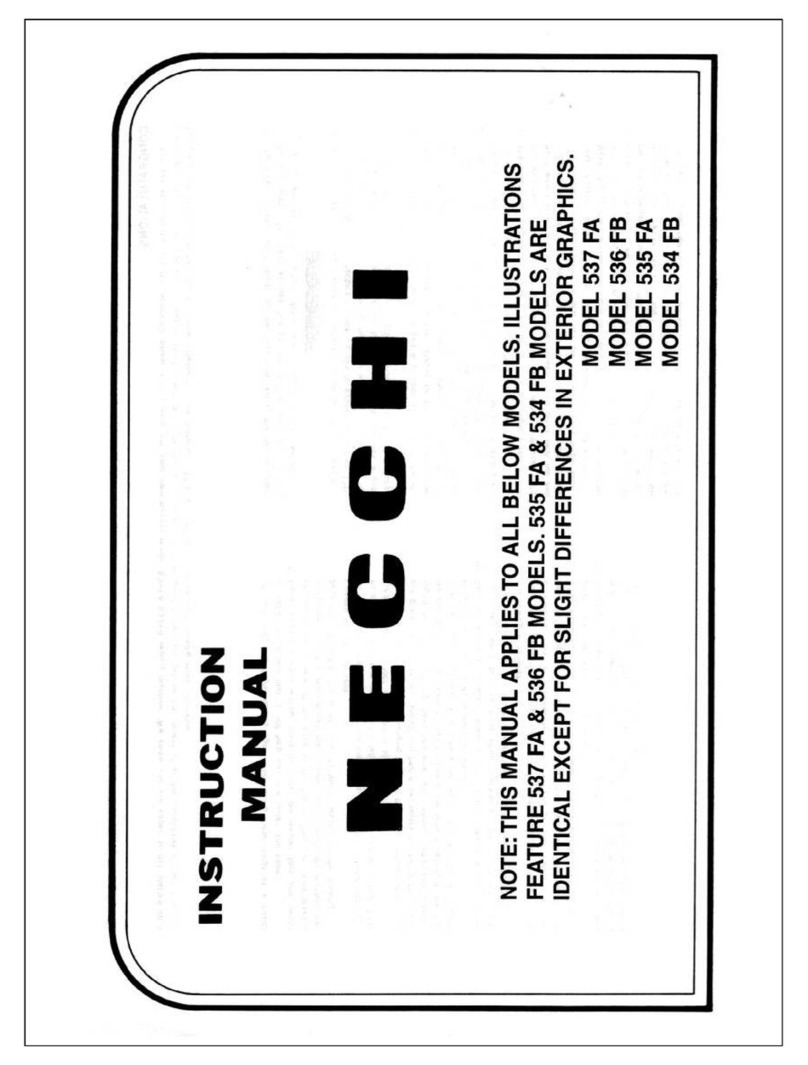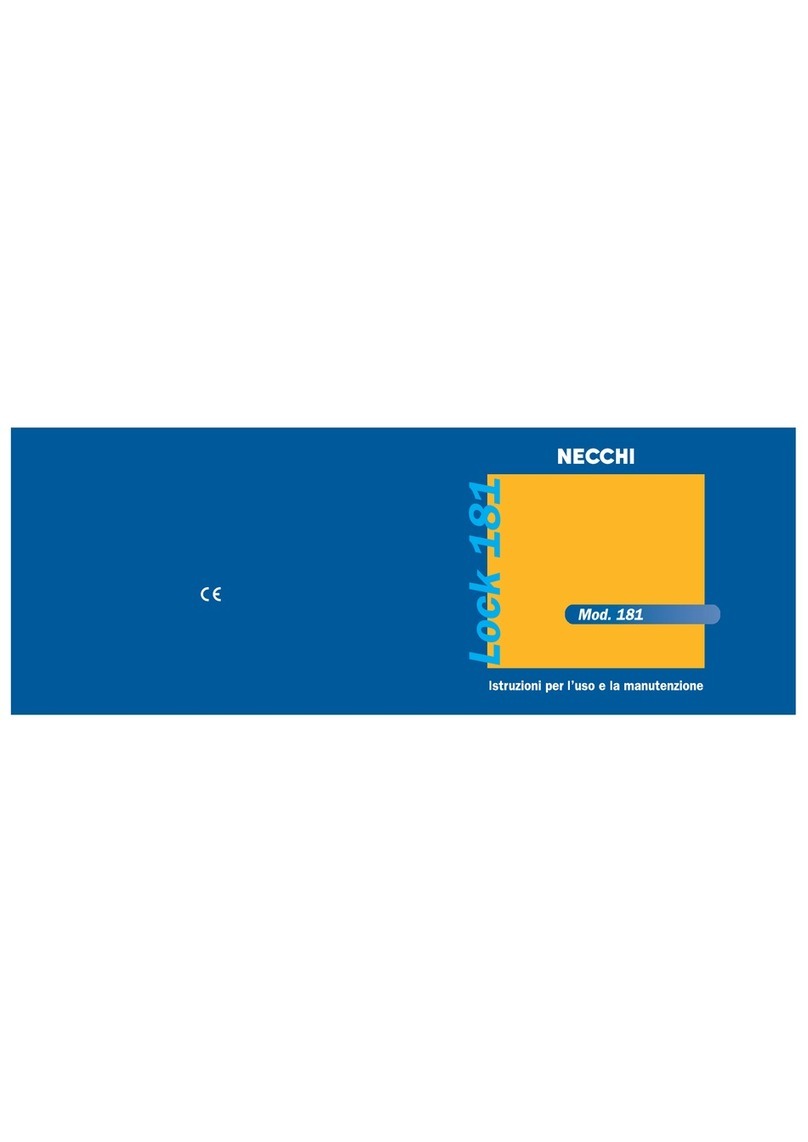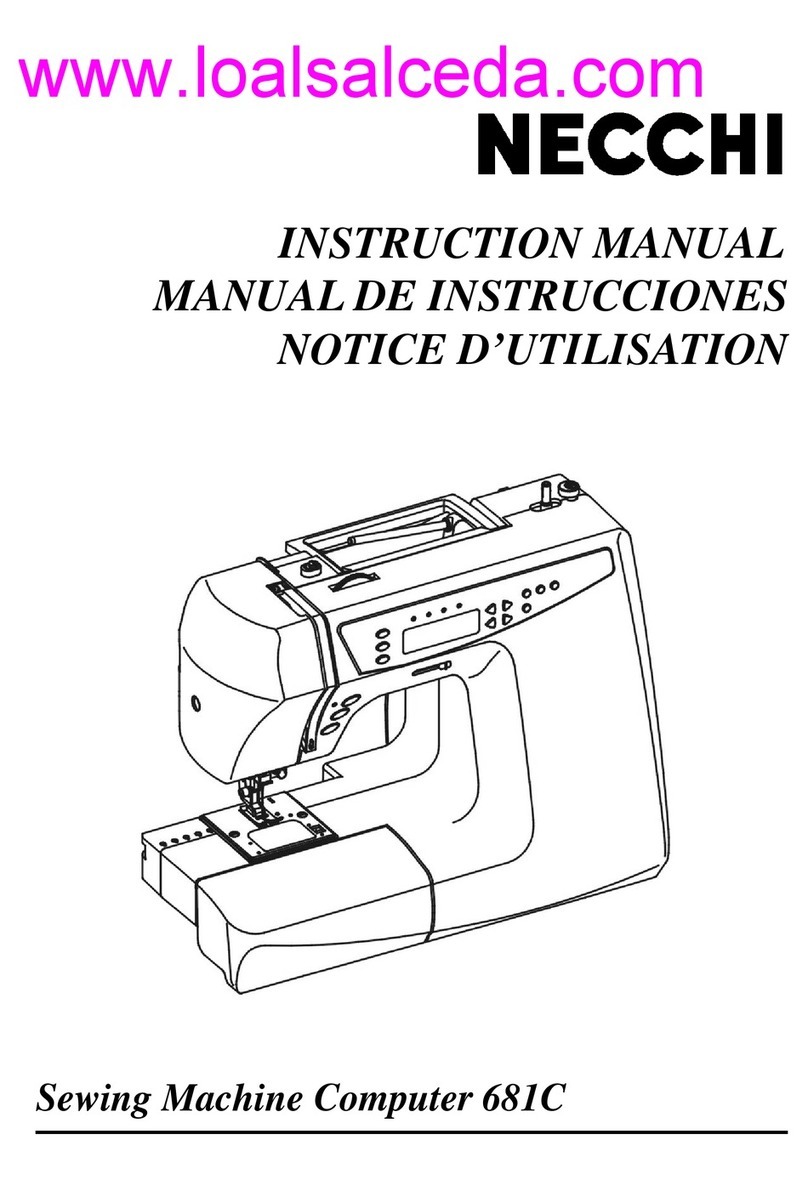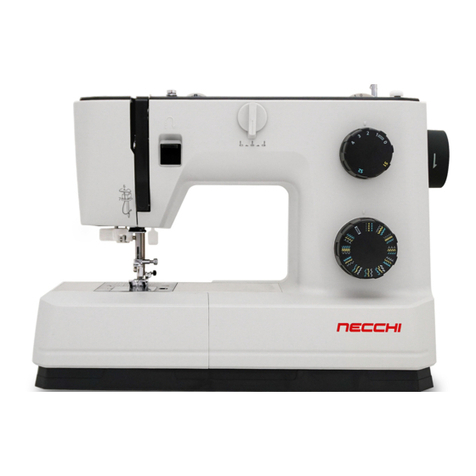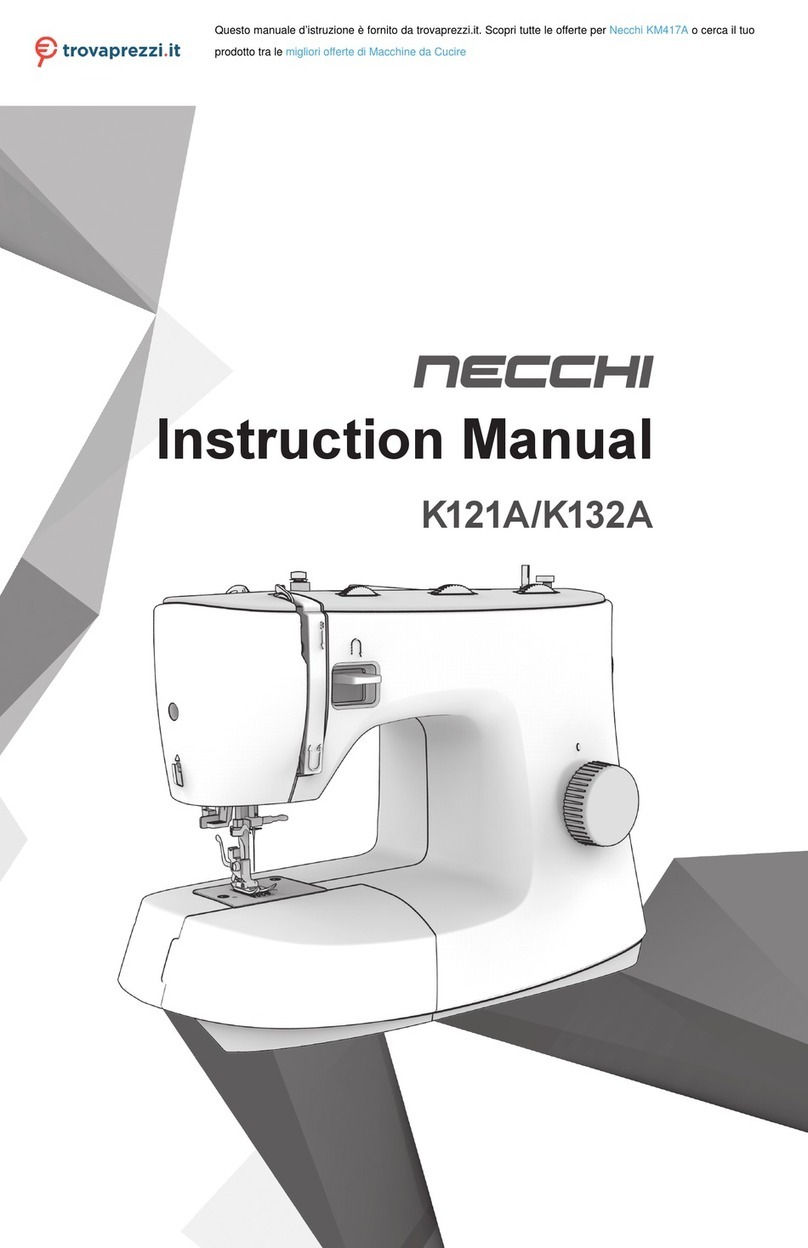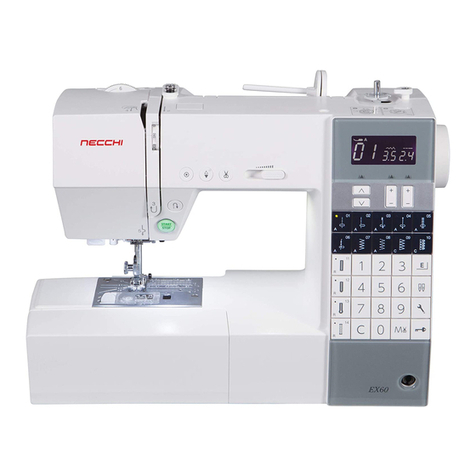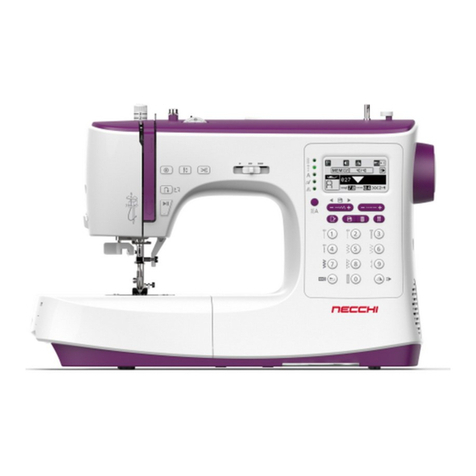1
TABLE OF CONTENTS
SECTION I ESSENTIAL PARTS
Names of Parts ............................................................................................ 2~3
SECTION II GETTING READY TO SEW
Connecting the Machine to the Power Supply ................................................ 6
Foot Control ..................................................................................................... 7
Sewing Light .................................................................................................... 7
Extension Table (Accessory Box) .................................................................... 8
Pressure Regulator .......................................................................................... 9
Dropping the Feed Dogs ............................................................................... 10
To Snap On and Snap Off the Presser Foot ................................................. 11
Changing Needles ......................................................................................... 12
Thread and Needle Chart .............................................................................. 13
Removing or Inserting the Bobbin Case ....................................................... 14
Winding the Bobbin ....................................................................................... 15
Threading Bobbin Case ................................................................................. 16
Threading the Machine .................................................................................. 17
Drawing Up Bobbin Thread ........................................................................... 18
Balancing Needle Thread Tension ................................................................ 19
Zigzag Width Dial .......................................................................................... 20
Pattern Selector Dial...................................................................................... 20
Stitch Length Dial .......................................................................................... 20
SECTION III BASIC SEWING
Straight Stitch Sewing ................................................................................... 21
Changing the Sewing Directions ................................................................... 22
Zigzag Stitching ............................................................................................. 22
SECTION IV UTILITY STITCHING
Overcasting .................................................................................................... 23
Overedge Stitch ............................................................................................. 23
Tricot Stitch .................................................................................................... 24
Triple Strength Stitch ..................................................................................... 24
Buttonhole Stitching................................................................................. 25~26
Sewing Buttons .............................................................................................. 27
Zipper Application .......................................................................................... 28
Blind Stitch Hemming .................................................................................... 29
Rolled Hem .................................................................................................... 31
Fagoting Stitch ............................................................................................... 31
Box Stitching .................................................................................................. 31
Elastic Stretch Stitch ..................................................................................... 32
SECTION V DECORATIVE STITCHING
Shell Tuck ...................................................................................................... 32
Feather Stitch ................................................................................................ 33
Decorative Satin Stitch Patterns ................................................................... 34
Stretch Stitch Patterns ................................................................................... 34
SECTION VI CARE OF YOUR MACHINE
Dismantling and Assembling Hook Race ...................................................... 35
Cleaning the Feed Dogs ................................................................................ 36
Oiling the Machine ......................................................................................... 37
Trouble Shooting ..................................................................................... 38~39

